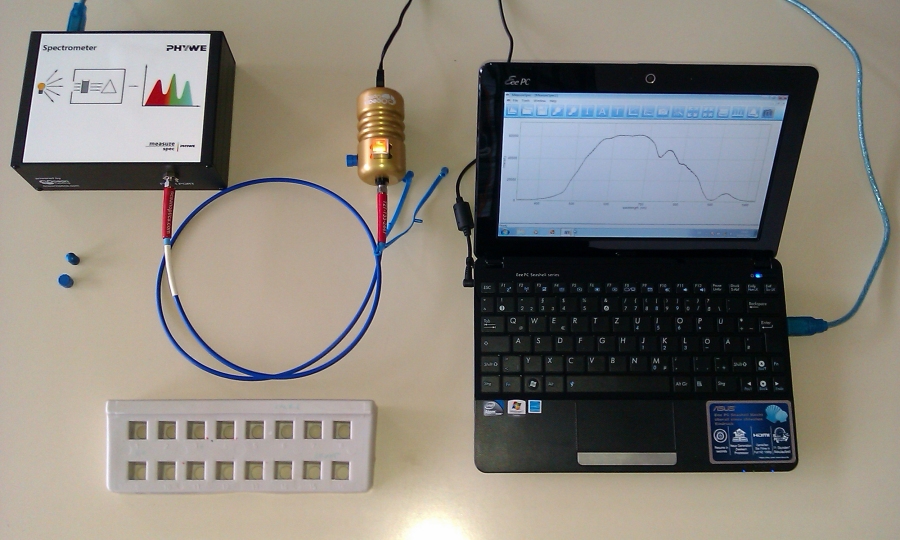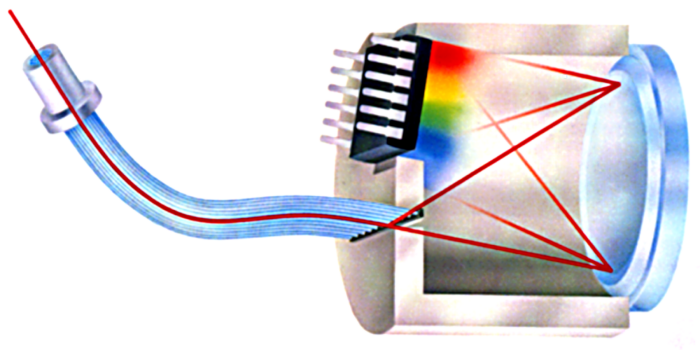Worksheet 4.2: An absorption photometer for instruction in school (1/6)
The components
A photometer for science instruction is available from a company for science teaching materials. It demonstates a complete system of all necessary components. The single parts are mostly accessible independently, so that their function is easily understood. In comparison to photometers in laboratories, where the component parts are hidden in a closed case, this educational photometer allows free experimentation and even changes in the set-up and alignment.

The use of polychromators has one particular advantage. In contrast to a monochromator, which can only detect the brightness at a single wavelength with a photodetector, a polychromator uses a detector array with many single components. The spectrometer for use in school has a detector array composed of 2048 elements! Supported by a comfortably operating software, nearly continuous spectra from 340 to 1026 nm are obtained with distances of about 0.4 nm (in the near UV) and 0.3 nm (in the near IR).

Source: CARL ZEISS, Oberkochen.
The light of examination is interlinked to a bundle of fibre glass (top left of the graphics). One of the fibres and the passing light is depicted in red as an example. The fibre bunde is reassembled from a circular to a linear disposition. That way they geometrically resemle at the entrance of the polychromator the entrance slit of a monochromator. The glass element on the right carries an optical grating for wavelength dispersion. At the same time, the concave glass element focuses the light from the entrance slit sharply onto the detector array. The elements of the array thereby synchronously register the spectrum of the light which enters the fiber glass bundle.
